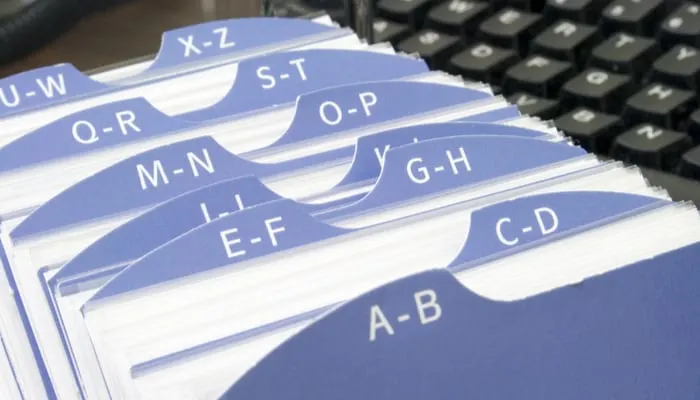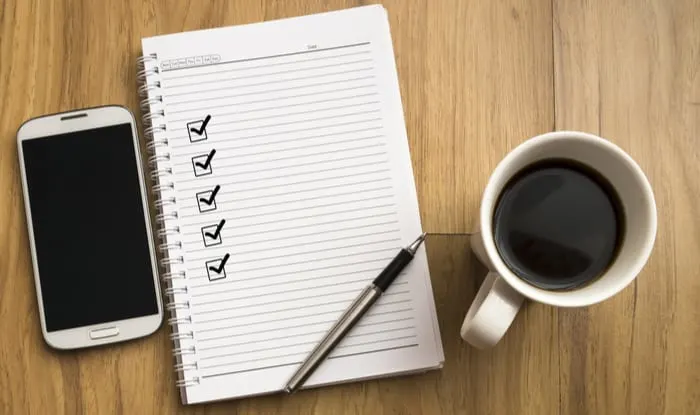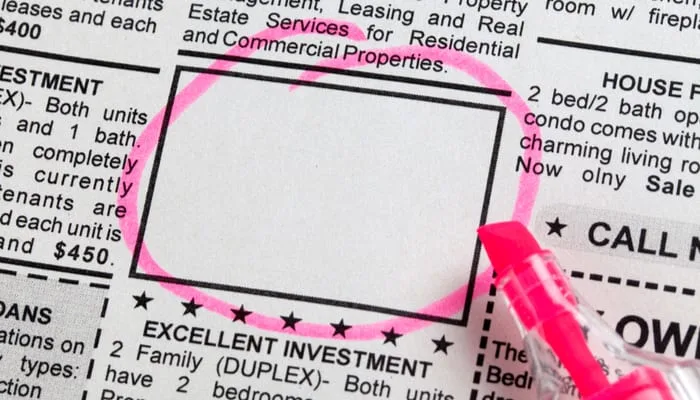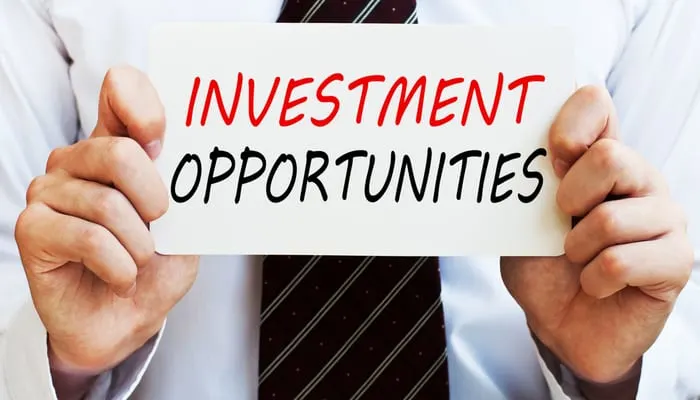Get better at building buyers lists’ by using proven strategies for real estate investors. These methods will help you keep a list of potential buyers at your fingertips.
The truth is, buyers lists help you make a sale faster and allow you to focus on building your portfolio. Whether you’re making long-term or short-term real estate investments, eventually, you’ll need buyers.
If you’ve been in this situation before, you know how frustrating and time-consuming it is to search for the right buyer last-minute.
Why You Need a Buyers List

Sergey Nivens/Shutterstock
You know how much smoother the process would be if you had a qualified buyers list to consult anytime you decide to sell a property.
Having that list ready and waiting when you need it is important. The key to earning a profit is optimizing the way you spend your time on each investment.
This includes researching, purchasing, maintaining, and selling. Spending unnecessary time searching for buyers when you’re ready to sell will only hold you back.
You’ll be more likely to accept a low offer, wait weeks to close, and reduce your overall profit. That’s why successful investors consider buyer’s lists so important.
They’re essential in building a sustainable real estate investment exit strategy. Buyers lists can’t be cobbled together last minute.
They require time, human connection, and a clear strategy to be effective. Inn this guide, we’ll show you how to build powerful buyers lists that will help you consistently sell your investment properties.
What Is a Buyers List?

Alexey Stiop/Shutterstock
A buyers list is a collection of contact information for real estate investors interested in buying investment properties you’re ready to sell.
Often, they are people you’ve already worked with. These investors, like you, are always on the lookout for properties they consider sound investments.
A buyers list is a resource you can call on again and again. Non-investors may only buy one home every 10-30 years.
Real estate investors, however, are always up for a fairly priced property they know they can make money on. An effective buyers list contains plenty of information on each person you’ve included.
You need to know not only the buyer’s name and how to contact them (email and phone), but also note their investment preferences and funding information.
This ensures you don’t waste time reaching out to buyers who won’t have an interest in your property or those who won’t have the right type of funding for the transaction.
It also keeps you from engaging investors on your list until you know you’ve got something that will interest them.
3 Keys to Creating Buyers Lists
Buyers lists’ that improve your chances of selling property quickly and profitably need to be built on three pillars: Connection, Criteria, and Continuity.
1. Connection

Most contacts in your buyers list should be investors you’ve already worked with. You need an established connection with your potential buyers.
Real estate investors build trust when they partner and work together. But you’re not just limited to investors you know already.
Being proactive and building new connections with other investors is essential to building an effective and sustainable buyers list.
Reaching out to a property owner or investor you don’t know can end in connection if you approach it the right way.
The bonus of creating a buyers list with investors you’re connected with is that it further strengthens the relationship and creates more opportunities for you.
The investor you called about your unlisted property for sale may appreciate it and repay the favor.
2. Criteria

Kenary820/Shutterstock
The second key to creating buyers lists is keeping your and the potential buyer’s criteria in mind. If you’re selling a single-family rental home, there’s little chance that your commercial real estate investor pal wants in on the deal.
Keeping an organized list with plenty of information about each contact will ensure you can keep their purchase criteria in mind for each property you sell.
Of course, you’ll have your own criteria to consider as well. By tracking things like their funding ability, you’ll know who to go to first and avoid certain transactions.
3. Continuity

Vadim Georgiev/Shutterstock
The third key to creating buyers lists is continuity. The creation of the list never really stops.
You’ll have to continuously:
- Make new connections
- Update buyer information and preferences
- Try new marketing methods and events to meet potential buyers
If you can develop a reputation as an investor who’s willing to give advice, partner with others, and pass along information on properties you’re not interested in, you’ll be able to grow your buyers list over time.
Best Places to Find Buyers
With the three keys to creating buyers lists in mind, where can you find buyers you don’t know already? There are plenty of options. Here are the best places to find potential buyers.
Family and Friends

Fizkes/Shutterstock
Family and friends can be a great source to find new buyers, and it should be your first step. You may know them well, but you don’t necessarily know everyone they’re connected to.
Some of your inner circle may not even know you’re a real estate investor. Even non-investor friends and family may want to invest once they get clear information from someone they trust (you).
Don’t hesitate to be open about your goals to build a buyers list. Let them know you’re trying to connect with people who may want to invest in property or partner on an investment deal.
Investor Events and Clubs
You’ll be sure to develop new investor connections, and further fill your buyers list by getting involved with other investors.
You can attend local or nearby events, join a real estate investing club, or sign up for upcoming investing classes. You might join a mix of in-person and virtual events to connect with investors in your area and other parts of the country.
Arrive early to ensure you have plenty of time to mingle with other investors and trade business cards and contact information. Follow up soon to build off that initial connection.
Ask if they’d mind being put on your buyers list to get notified of upcoming properties for sale. Chances are, you’ll get a lot of positive responses.
Newspaper and Online Classifieds

Feng Yu/Shutterstock
Classified ads are a great way to find landlords who are advertising property for rent. If they’re savvy enough to market a vacancy, there’s a good chance they’ll be interested in hearing about upcoming investment properties you may have for sale.
Check local newspapers and sites like Craigslist and LSN to find “For Rent” ads. Make a quick phone call or send a short email to landlords listed and offer to loop them in on properties they may want to buy.
Not everyone will say yes, but you might end up connecting with an investor who’s actively growing their own portfolio or a landlord who wants to sell.
If you’re emailing, include links to any current listings you have or past listings to give an idea of the types of properties you buy and sell.
Property Managers
Don’t overlook the enormous potential of contacting property managers to meet landlords and investors and grow your buyers list.
Property managers and management companies are in direct contact with investors who own the properties they maintain and manage. Property managers are often “tapped into” the local investor network.
They may be able to offer advice and contact information for investors they work with. Let them know you’re working on building a buyers list and would appreciate their guidance.
Trade business cards and offer to share their information with investors who may need property management services.
Optimizing Your Buyers List

Sk Design/Shutterstock
Using the methods above to find buyers for your list will get you off to a good start. But creating an optimized buyers list is more than just the basic information.
Once you have names, contact information, preferences, and funding ability noted, you need to organize it well.
There’s nothing wrong with having a little black book, but you can do so much more digitally. Consider using real estate investor software to store and organize your buyers list.
Most options allow you to create categorized contact and lead lists, send scheduled emails with information about your properties for sale, connect with seller leads, etc.
With all your buyers in one digitally accessible place, you’ll never lose your list. Every buyer’s information will be at your fingertips.
You’ll be able to organize the list based on different criteria, like residential/commercial buyers, cash buyers, current landlords, buyers interested in distressed properties, etc.
To make this entire process easier, we’ve created a list of the Best Software for Real Estate Investors, a great place to start your search.
Start Building Your Buyers List Now
In this guide, we’ve covered what a buyers list is and how it can make you a more successful, connected, and profitable investor.
We talked about the three essential keys to creating a buyers list:
- Connection
- Criteria
- And continuity
The best places to find buyers for your list were included (family and friends, investor clubs, classifieds, and property managers).
We covered a few ideas to help you optimize your buyers list once you’ve got the information you need, like contact info, property preferences, and funding ability.
We addressed the importance of compiling this data in an REI software program or platform. You have everything you need to start building your buyers list now.
Consider your buyers list an essential project that is never finished if you want one that consistently connects you with willing buyers.
When you decide to sell your next property, you’ll have an organized master list ready. You’ll be able to filter it to show you the people who are most likely to be interested and hide those who are not.
The time you’ll save and the ease of the transaction will prove that investing time into your buyers list is more than worth it.

